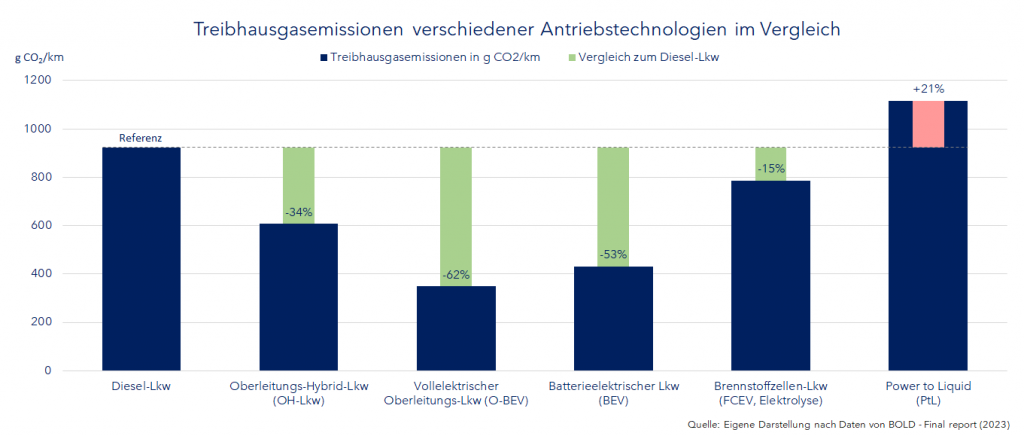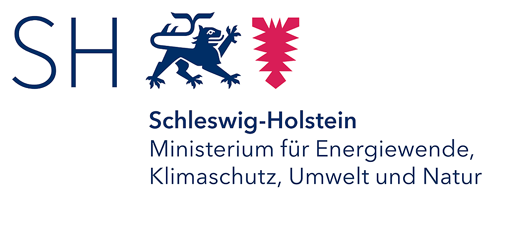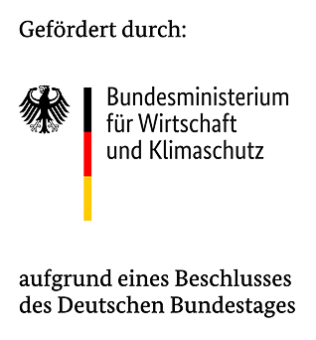Overhead line trucks ahead in the environmental assessment
KARLSRUHE. In the In the October the Fraunhofer Institute for Systems and Innovation Research (ISI), the Okö Institute and the Institute for Energy and Environmental Research (ifeu) jointly published the final report of their project BOLD.
They came to the conclusion that vall-electric overhead line trucks (O-BEV) in contrast to alternative drive types such as purely battery electric trucks (BEV), have the advantage of direct and more efficient electricity use in combination with small batteries. have. O-BEVS perform best in the technology comparison not only in terms of greenhouse gas emissions, but also in terms of all other environmental impacts.
In the environmental assessment wuwere the CO2 savings potential of the possible drive technologies. Chart 1 shows that fully electric overhead line trucks achieve the highest CO2 reduction rate (-62% compared to diesel trucks) showen. A truck of this type has been in operation since November of this year by the practice partner DHL / German Post tested on the Schleswig-Holstein eHighway. Followed by the O-BEV in its CO2 balance from then purely battery-electric trucks (-53%).
The overhead line hybrid truck (OH-truck) wurde hThe CO2 reduction effects of the project are evaluated. The research team assumed assumed a 65% share of overhead lines and calculatede CO2 reduction effects of -34%. Current data from the eHighway Schleswig-Holstein field trial with newer vehiclevehicle models show, however, that OH trucks have a corresponding CO2-Esavings even with designificantly lower Oproportion of the routecan be achieved.
In addition to the CO2 reduction potential, the BOLD report also looked at other environmental criteria.and an overall environmental balance of the various technologies set up (see figure 2). Daafter cuts the fully electric overhead line truck with all Kriteria best from. To these count In addition to greenhouse gas emissions, the indicator for energy efficiency (“cumulative energy demand” (CED)), acidification (which leads to reduced plant growth, for example), eutrophication (which threatens biodiversity due to an oversupply of nutrients) and particulate matter formation (which has a negative impact on human health). Compared to the battery electric truck (BEV), the differences are particularly noticeable in the areas of eutrophication, energy efficiency and particulate matter formation, where the fully electric overhead line truck has significantly better values.





